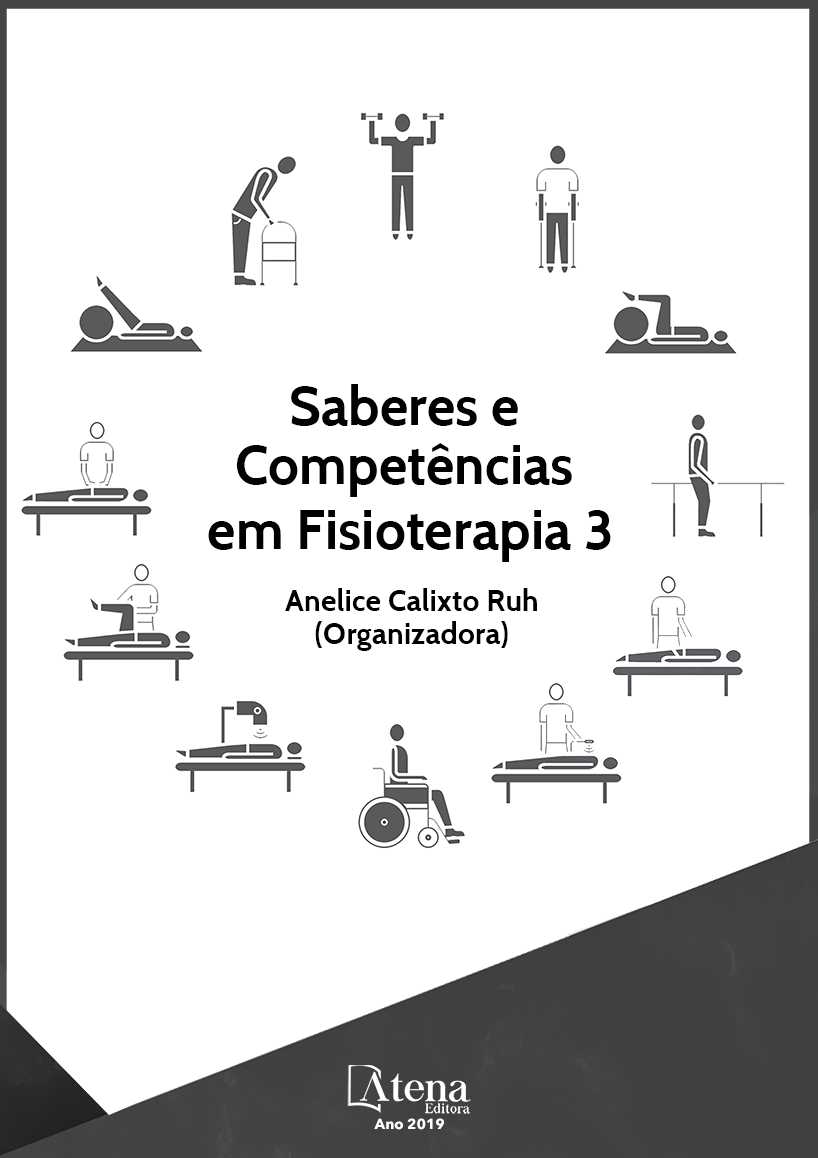
CORRELAÇÃO ENTRE DOR, QUALIDADE DO SONO E GRAU DE CATASTROFIZAÇÃO DE INDIVÍDUOS COM DISFUNÇÃO TEMPOROMANDIBULARAPÓS UTILIZAÇÃO DA ELETROESTIMULAÇÃO ANALGÉSICA
Transcutaneous Electrical
Nerve Stimulation (TENS) é uma terapia
recomendada como estratégia no controle da
dor musculoesquelética incluindo a disfunção
temporomandibular (DTM). Objetivo: Analisar
a correlação entre dor, qualidade do sono e
grau de catastrofização em indivíduos com
DTM tratados com TENS. Métodos: Incluídos
40 indivíduos na faixa etária de 18 a 35 anos
com sintomas de DTM muscular. O diagnóstico
de DTM foi realizado seguindo-se a versão
brasileira do ResearchDiagnosticCriteriae os
voluntários foram distribuídos aleatoriamente
em dois grupos: (1) TENS placebo (n=20) e (2)
TENS ativo (n=20). Foi realizada aplicação única da TENS bilateralmente nos músculos
masseteres e temporais anteriores (pulso=90 μs;duração=50 minutos;frequência
de 100 Hz nos primeiros 25 minutos e de4 HZ nos últimos 25 minutos; intensidade
alta, porém sem possibilitar contração muscular). Para o grupo TENS placebo foram
utilizados os mesmos parâmetros, porém com estímulo transiente. A qualidade do sono
foi avaliada através do PittsburgSleepQuality Index e o grau de catastrofização pela
Escala de Pensamentos Catastróficos sobre a Dor. Os desfechos intensidade da dor
e limiar de dor a pressão dos músculos mastigatórios e cervicais fora avaliados antes,
imediatamente após e 48 horas depois da aplicação da TENS. Resultados: No grupo
TENS ativo, a catastrofização se correlacionou de maneira negativa com a variação do
limiar de dor à pressão do músculo temporal anterior. Conclusão: Foi verificado que o
maior grau de catastrofização e a má qualidade do sono podem influenciar a resposta
hipoalgésica induzida pela TENS ativa.
CORRELAÇÃO ENTRE DOR, QUALIDADE DO SONO E GRAU DE CATASTROFIZAÇÃO DE INDIVÍDUOS COM DISFUNÇÃO TEMPOROMANDIBULARAPÓS UTILIZAÇÃO DA ELETROESTIMULAÇÃO ANALGÉSICA
-
DOI: 10.22533/at.ed.4401920086
-
Palavras-chave: Síndrome da Disfunção Temporomandibular; TENS; dor; sono; catastrofização.
-
Keywords: Temporomandibular Disorder, TENS, pain, Sleep; catastrophizing.
-
Abstract:
Transcutaneous Electrical Nerve Stimulation (TENS) is a recommended
therapy as a strategy to control of musculoskeletal pain including temporomandibular
disorder (TMD). Objective: Toanalyze the correlation between pain, sleep quality and
degree of catastrophizing in individuals with TMD that used TENS. Methods: Were
included40 subjectsaged between 18-35 years, with symptoms of muscular TMD.
The diagnosis of TMD was performed following the Brazilian version of Research
Diagnostic Criteria and the volunteers were randomly allocated into (1) the TENS
placebo (n=20) and (2) the TENS active (n=20) groups. A single application of TENS
was performed bilaterally on anterior temporalis and masseter muscles (Dp=90 μs;
duration=50 minutes; frequency of 100 Hz on the first 25 minutes and of 4 Hz on the
last 25 minutes; high intensity without muscle contraction). For the placebo TENS group
the same parameters were used, although with a transient stimulus. The sleep quality
was evaluated by Pittsburgh Sleep Quality Index and the degree of catastrophizing
by Pain Catastrophizing Scale. The outcomes of pain intensity and pressure pain
threshold of the masticatory and cervical muscles were evaluated before, immediately
after and after 48 hours of TENS application. Results: In the active TENS group, the
catastrophization was negatively correlated with the pressure pain threshold variation
of the anterior temporalis muscle. Conclusion: It was verified that the higher degree of
catastrophization and the poor sleep quality might influence the hypoalgesic response
induced by the active TENS.
-
Número de páginas: 15
- Leonardo RigoldiBonjardim
- Catarina Nicácio dos Santos
- Elisama Maria de Amorim
- Juliana Avelino Santiago
- Isaac Newton de Abreu Figueirêdo
- Jader Barbosa Fonseca
- Carla Raquel de Melo Daher
- Ana Izabela Sobral de Oliveira Souza
- Débora Wanderley Villela
- Dayse Regina Alves da Costa
- Maria das Graças Rodrigues de Araújo
- Ana Paula de Lima Ferreira


